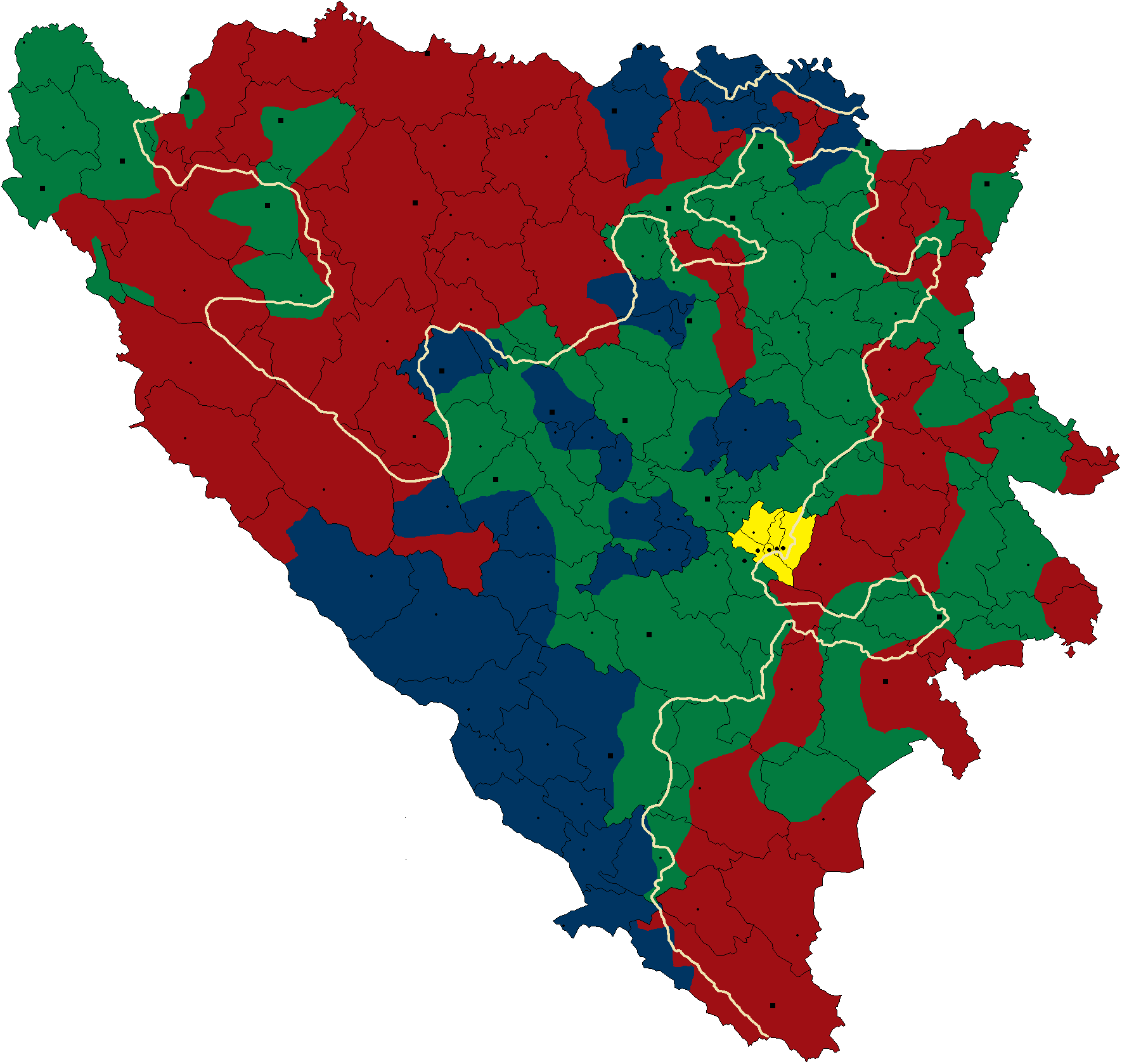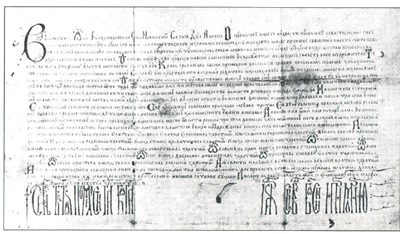|
ARBiH
The Army of the Republic of Bosnia and Herzegovina ( bs, Armija Republike Bosne i Hercegovine or ARBiH), often referred to as Bosnian Army, was the military force of the Republic of Bosnia and Herzegovina. It was established by the government of Bosnia and Herzegovina in 1992 following the outbreak of the Bosnian War. Following the end of the war, and the signing of the Dayton Peace Agreement in 1995, it was transformed into the Army of the Federation of Bosnia and Herzegovina. The ARBiH was the only military force on the territory of Bosnia and Herzegovina recognised as legal by other governments. Under the State Defense Reform Law the Armed Forces of Bosnia and Herzegovina were unified into a single structure, the Armed Forces of Bosnia and Herzegovina (OSBiH), making entity armies defunct. History Creation and composition The Army of Republic of Bosnia and Herzegovina was formed on 15 April 1992 during the early days of the Bosnian War. Before the ARBiH was officiall ... [...More Info...] [...Related Items...] OR: [Wikipedia] [Google] [Baidu] |
Croat–Bosniak War
The Croat–Bosniak War was a conflict between the Republic of Bosnia and Herzegovina and Croatian Republic of Herzeg-Bosnia, supported by Croatia, that lasted from 18 October 1992 to 23 February 1994. It is often referred to as a "war within a war" because it was part of the larger Bosnian War. In the beginning, Bosniaks and Croats fought in an alliance against the Yugoslav People's Army (JNA) and the Army of Republika Srpska (VRS). By the end of 1992, however, tensions between Bosniaks and Croats increased. The first armed incidents between them occurred in October 1992 in central Bosnia. Their military alliance held out until early 1993 when their cooperation fell apart and the two former allies engaged in open conflict. The Croat–Bosniak War escalated in central Bosnia and soon spread to Herzegovina, with most of the fighting taking place in those two regions. The Bosniaks were organized in the Army of the Republic of Bosnia and Herzegovina (ARBiH), and Croats in the Cr ... [...More Info...] [...Related Items...] OR: [Wikipedia] [Google] [Baidu] |
Bosnian War
The Bosnian War ( sh, Rat u Bosni i Hercegovini / Рат у Босни и Херцеговини) was an international armed conflict that took place in Bosnia and Herzegovina between 1992 and 1995. The war is commonly seen as having started on 6 April 1992, following a number of earlier violent incidents. The war ended on 14 December 1995 when the Dayton accords were signed. The main belligerents were the forces of the Republic of Bosnia and Herzegovina and those of Herzeg-Bosnia and Republika Srpska, proto-states led and supplied by Croatia and Serbia, respectively. The war was part of the breakup of Yugoslavia. Following the Slovenian and Croatian secessions from the Socialist Federal Republic of Yugoslavia in 1991, the multi-ethnic Socialist Republic of Bosnia and Herzegovina – which was inhabited by mainly Muslim Bosniaks (44%), Orthodox Serbs (32.5%) and Catholic Croats (17%) – passed a referendum for independence on 29 February 1992. Political representatives of the ... [...More Info...] [...Related Items...] OR: [Wikipedia] [Google] [Baidu] |
Siege Of Sarajevo
The Siege of Sarajevo ( sh, Opsada Sarajeva) was a prolonged blockade of Sarajevo, the capital of Republic of Bosnia and Herzegovina, Bosnia and Herzegovina, during the Bosnian War. After it was initially besieged by the forces of the Yugoslav People's Army, the city was then besieged by the Army of Republika Srpska from 5 April 1992 to 29 February 1996 (1,425 days). It lasted three times longer than the Battle of Stalingrad, more than a year longer than the siege of Leningrad, and was the longest siege of a capital city in the history of modern warfare. When Bosnia and Herzegovina declared independence from Socialist Federal Republic of Yugoslavia, Yugoslavia after the Bosnian independence referendum, 1992, 1992 Bosnian independence referendum, the Bosnian Serbs—whose strategic goal was to create a new Bosnian Serb state of Republika Srpska (RS) that would include Bosniak-majority areas—encircled Sarajevo with a siege force of 13,000 stationed in the surrounding hills. Fro ... [...More Info...] [...Related Items...] OR: [Wikipedia] [Google] [Baidu] |
Military Ranks And Insignia Of Bosnia And Herzegovina
Military rank system and military insignia of Bosnia and Herzegovina shows the military rank system and insignias used by the Army of the Republic of Bosnia and Herzegovina that existed from 1992 to 2005 and the current Armed Forces of Bosnia-Herzegovina (OSBIH - ''Oružane Snage Bosne i Hercegovine'') that exists from 2006 to present. The ranks are defined in Article 155, Article 156, Article 157 and Article 158 of the Law on Service in the AFBiH. Current ranks Commissioned officer ranks The rank insignia of commissioned officers. Other ranks The rank insignia of non-commissioned officers and enlisted personnel. Historical ranks Ranks (1992−1996) Commissioned officer ranks The rank insignia of commissioned officers. Other ranks The rank insignia of non-commissioned officers and enlisted personnel. Ranks (1997−2005) Commissioned officer ranks The rank insignia of commissioned officers. Other ranks The rank insignia of non-commissioned officers and en ... [...More Info...] [...Related Items...] OR: [Wikipedia] [Google] [Baidu] |
Rasim Delić
Rasim Delić (4 February 1949 – 16 April 2010) was the chief of staff of the Bosnian Army. He was a career officer in the Yugoslav Army but left it during the breakup of Yugoslavia and was convicted of war crimes by the International Criminal Tribunal for the former Yugoslavia, being sentenced to 3 years in prison. Career Yugoslav National Army Delić began his military career in the Yugoslav People's Army (JNA) on 1 October 1967 at the Military Academy for land forces, where he completed his studies there on 31 July 1971. From 1971 to 1985 he served in an artillery division of the JNA based in Sarajevo and from October 1980 to September 1984 as its commander. From September 1984 to August 1985, Rasim served as Chief of Staff and Deputy Commander of a joint artillery regiment. Between August 1985 and July 1990, except for an interruption of about eleven months in 1988/89 when he attended Command Staff School, Rasim was commander of a joint artillery regiment. On 22 December 1987 ... [...More Info...] [...Related Items...] OR: [Wikipedia] [Google] [Baidu] |
Supreme Command Of The Army Of The Republic Of Bosnia And Herzegovina
The Supreme Command of the Army of the Republic of Bosnia and Herzegovina (''Štab Vrhovne Komande Armije Republike Bosne i Hercegovine'') was the supreme command of the Army of the Republic of Bosnia and Herzegovina and it was headquartered in the Presidency Building in Sarajevo. Creation The main staff was transformed from the Bosnian territorial defence chiefs of staff and Patriotic League general staff Commanders Sefer Halilović served as the supreme ABiH commander until 8 June 1993 and his title was Chief of Staff of the Main Staff of the ARBiH. On this date, the President of the Republic of Bosnia and Herzegovina, Alija Izetbegović, issued a decision "restructuring ��the ��supreme command headquarters of the armed forces" ("8 June 1993 decision").This decision provides: *The post of the Commander of the Main Staff of the Armed Forces of the Republic of Bosnia and Herzegovina shall be established. *The post of the Chief of the Main Staff of the Armed Forces of the Republi ... [...More Info...] [...Related Items...] OR: [Wikipedia] [Google] [Baidu] |
Army Of Republika Srpska
The Army of Republika Srpska ( sr, Војска Републике Српске/Vojska Republike Srpske; ВРС/VRS), commonly referred to in English as the Bosnian Serb Army, was the military of Republika Srpska (RS), the self-proclaimed Serb secessionist republic, a territory within the newly independent Bosnia and Herzegovina (formerly part of Yugoslavia), which it defied and fought against. Active during the Bosnian War from 1992 to 1995, it continued to exist as the armed forces of RS, one of two entities making up Bosnia and Herzegovina, until 2006 when it was integrated into the Armed Forces of Bosnia and Herzegovina. Forces of the VRS engaged in a number of campaigns, including Operation Corridor 92, Operation Vrbas '92, Operation Bura, and Operation Spider; they were also involved in the siege of Sarajevo, as well as the Srebrenica massacre. Personnel The Army of the Republika Srpska (VRS) was founded on 12 May 1992 from the remnants of the Yugoslav People's Army (JNA ... [...More Info...] [...Related Items...] OR: [Wikipedia] [Google] [Baidu] |
Visoko 1992 Giovanni Zanchini 09
Visoko ( sr-cyrl, Високо, ) is a city located in the Zenica-Doboj Canton of the Federation of Bosnia and Herzegovina, an entity of Bosnia and Herzegovina. As of 2013, the municipality had a population of 39,938 inhabitants with 11,205 living in Visoko town. Located between Zenica and Sarajevo, Visoko lies where the river Fojnica joins the Bosna. The Visoko region has evidence of long continuous occupation, with the first traces of life dating back to the 5th millennium BC. Archaeological excavations of Okolište have found one of the biggest neolithic settlements of the Butmir culture in southeastern Europe. It was an early political and commercial center of the Bosnian medieval state, and the site where the first Bosnian king Tvrtko I was crowned. The Old town Visoki, located on Visočica hill, was a politically important fortress, and its inner bailey Podvisoki was an early example of a Bosnian medieval urban area.Pavao Anđelić, Srednji vijek – Doba stare bosans ... [...More Info...] [...Related Items...] OR: [Wikipedia] [Google] [Baidu] |


.jpg)

.jpg)
